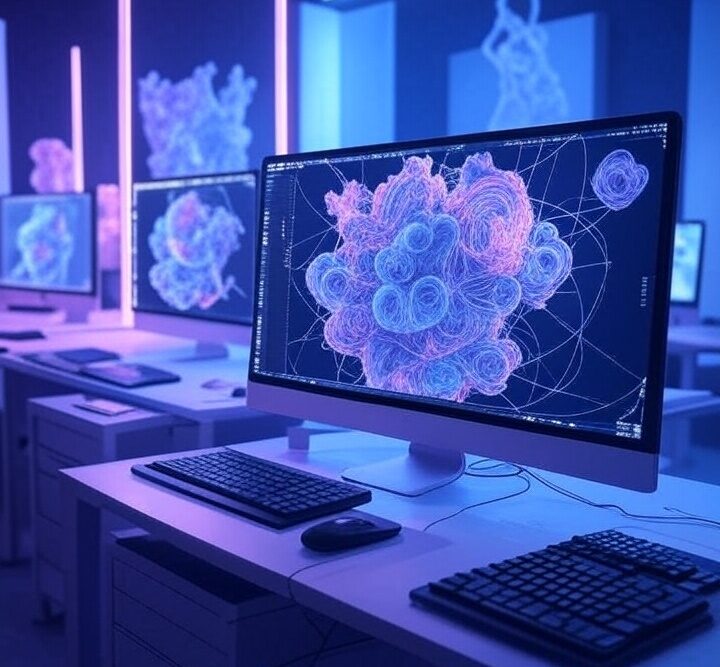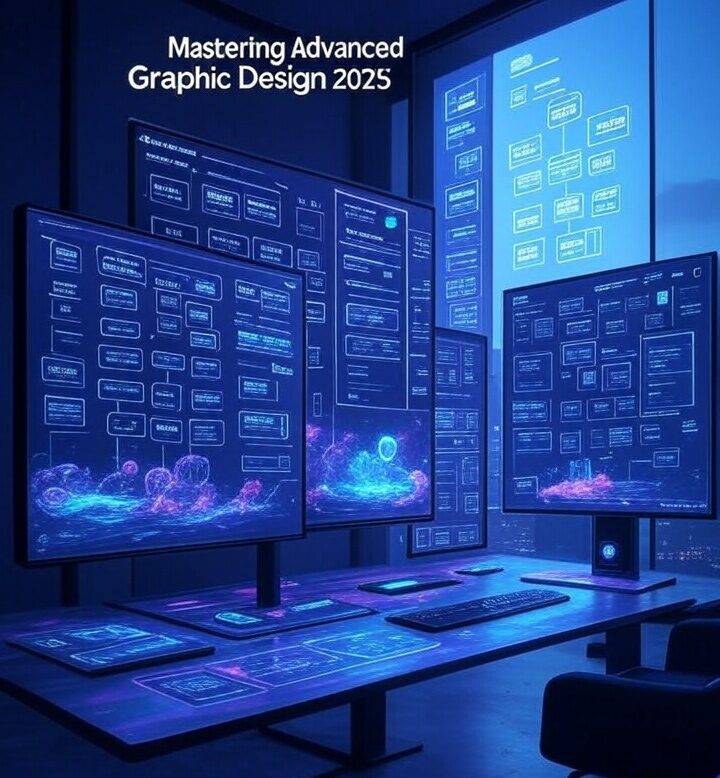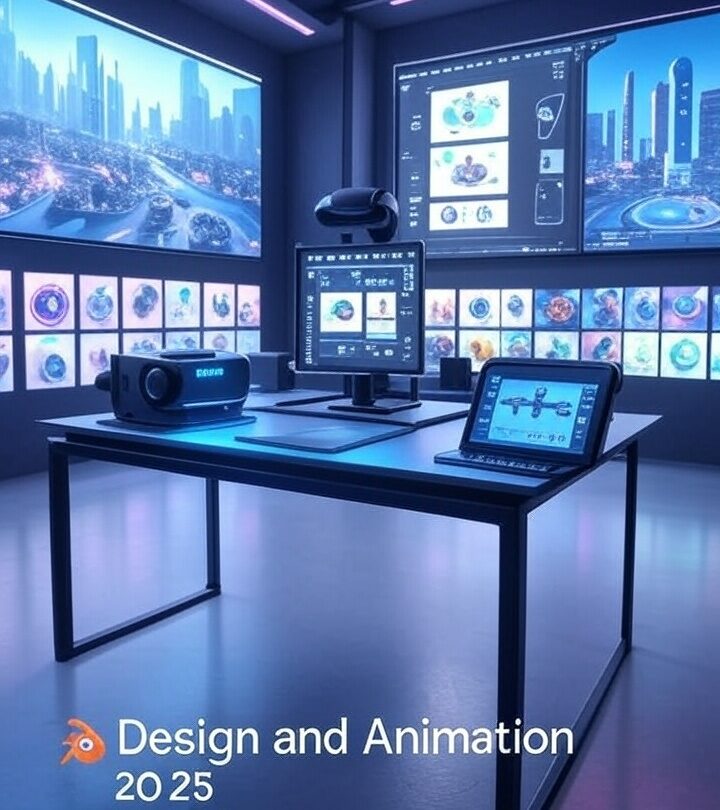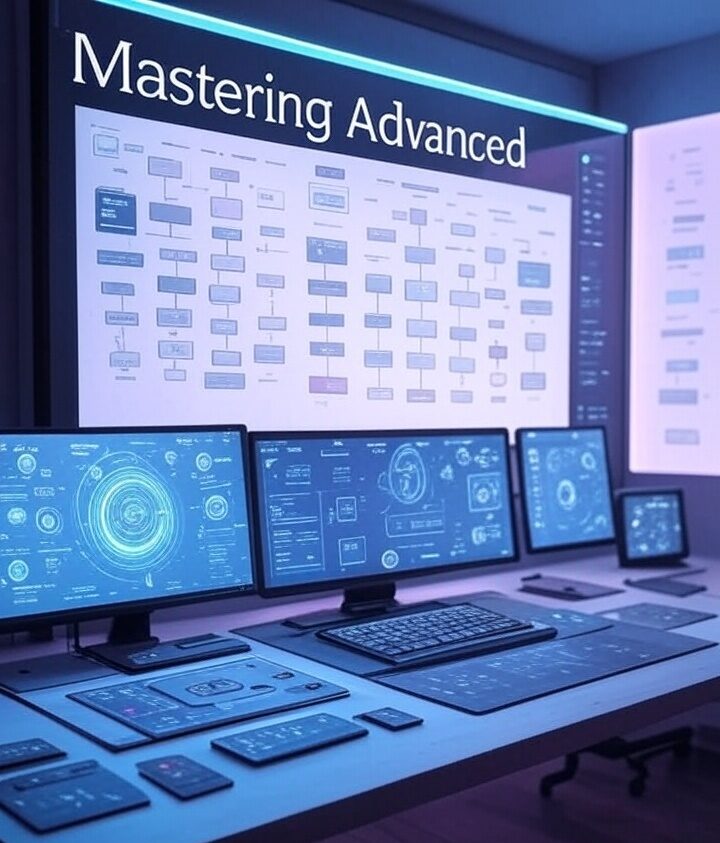
As we step into 2025, the world of graphic design is undergoing a transformative evolution, blending cutting-edge technology with timeless human creativity. From AI-powered design tools that act as creative partners to immersive 3D animations that bring static images to life, the landscape of advanced graphic design 2025 is more dynamic and exciting than ever before.
In this comprehensive guide, “Mastering Advanced Graphic Design Techniques in 2025: From Pro to Expert,” we’ll dive into key areas shaping the future of design. You’ll explore advanced motion graphics with tools like Adobe After Effects and Cinema 4D, creating animations that captivate. We’ll also cover 3D design techniques using Blender and Maya for photorealistic renders, and tackle complex branding that goes beyond logos. Plus, you’ll learn client negotiation tips for effective communication and strategies for scaling your design business, ensuring you’re equipped with advanced design skills for 2025.
Why does this matter for pros? In a field where innovation is the currency, mastering these skills positions you as a leader, capable of delivering work that sets new benchmarks. Whether enhancing your portfolio or attracting high-profile clients, this guide is your gateway to excelling in advanced graphic design for experts. Let’s unlock your full potential together!

AI and Machine Learning in Design
In 2025, AI and machine learning are revolutionizing graphic design, making it easier and more creative for pros like you. Tools like Midjourney, Dall.E.2, and Jasper are key players, helping generate stunning visuals from simple prompts. They’re not just for 2D designs—they’re also shaping AR and VR, though their exact roles are still developing. Let’s explore how they’re changing the game, the ethics to keep in mind, and advanced ways to ideate and prototype.
Transformation and Tools
AI tools are transforming design by automating tasks and boosting creativity. Midjourney and Dall.E.2 create images, illustrations, and 3D models from text, while Jasper AI generates images and ensures brand consistency with its Brand Voice tool. These tools save time, letting you focus on big ideas.
AR and VR Applications
While specific AR and VR uses for these tools are emerging, they can create assets for immersive experiences. For example, Midjourney and Dall.E.2 might generate 3D models for VR environments, and Jasper could help with branded AR overlays, enhancing user engagement.
Ethical Considerations
Using AI raises ethical questions, like potential biases in generated content or copyright issues. It’s important to use these tools responsibly, ensuring originality and respecting intellectual property to avoid legal troubles.
Advanced Techniques
AI speeds up ideation by offering instant visual feedback, letting you explore styles quickly. For prototyping, it generates wireframes and mockups, making development faster. Jasper’s AI chatbot even suggests ideas, helping overcome creative blocks.
Advanced Motion Graphics
In 2025, advanced motion graphics are all about creating animations that grab attention, using Adobe After Effects and Cinema 4D. These tools let you blend 2D and 3D for stunning visuals, perfect for videos or branding.
Tools and Techniques
Adobe After Effects and Cinema 4D work together seamlessly. After Effects comes with Cinema 4D Lite, so you can create 3D scenes and edit them right in After Effects. This means you can add depth to animations, like combining 2D text with 3D models. Cinema 4D 2025.3 adds liquid simulations, great for dynamic effects like water or lava, making animations more engaging.
Tutorials and Case Studies
Try this: In After Effects, import a Cinema 4D file, use the Cineware effect to render it, and add effects like glow or blur. For Cinema 4D, create a liquid simulation, then bring it into After Effects for final touches. Check out Spotify’s Wrapped for colorful animations or Nike’s “You Can’t Stop Us” for emotional storytelling, likely using these tools. For deeper dives, see our cluster post on Motion Graphics Techniques.
Why It Matters
Mastering these skills sets you apart, helping you create animations that wow clients and stand out in 2025’s competitive field. Ready to level up? Explore more at [The Ultimate Guide to Becoming a Graphic Designer in 2025]([insert link])!
3D Design and Animation
3D design and animation are all about creating stunning, lifelike visuals and immersive experiences. This section dives into how Blender and Maya can help you master these skills, focusing on photorealistic rendering and VR, with applications in branding.
Tools and Techniques
Blender: The People’s Champion
Blender is free, open-source, and perfect for beginners and pros alike. Its Cycles engine uses physically based rendering (PBR) for photorealistic images, ideal for product visualizations or architectural renders. Eevee, Blender’s real-time renderer, lets you see animations instantly, speeding up your workflow.
Maya: The Industry Standard
Maya, on the other hand, is a pro’s choice, especially in film and games. Its 2025.3 update includes a new Boolean algorithm for reliable modeling and OpenPBR support for standardized materials. Arnold, Maya’s renderer, handles complex scenes with GPU acceleration, cutting rendering times.
Immersive Experiences and Branding
Both tools support VR, with Maya excelling in professional production and Blender gaining ground via community add-ons. For branding, 3D design creates animated logos or 360-degree product views, like virtual showrooms, enhancing client engagement.
Which to Choose?
Blender’s free and easy to learn, great for starting out. Maya’s advanced features suit industry pros. Mastering these ensures you stand out in 2025’s design world. For more, check our cluster post on [3D Design Mastery](insert link here).

Complex Branding and Identity Design
branding isn’t just about a static logo—it’s about creating a living, breathing identity that grabs attention. This section dives into how motion and 3D can transform your brand, making it stand out with dynamic visuals and immersive experiences.
Complex Branding with Motion and 3D
Motion design brings brands to life, using animations to tell stories and engage audiences. For example, ENEL uses 3D motion graphics to show renewable energy, making complex ideas clear and memorable. Spotify Wrapped uses motion to create personalized, engaging digital experiences, boosting user connection. 3D adds depth, like MSD Careers’ miniature city visuals, enhancing brand storytelling.
Practical Tips
Start by animating logos with tools like Adobe After Effects for smooth transitions. Use 3D elements in branding videos to create immersive product showcases, ensuring consistency across platforms. Document motion guidelines to keep your brand cohesive, and explore others’ work for inspiration, like Deezer’s motion-first identity.
Client Negotiation and Communication
Mastering client negotiation and communication is key to thriving as a graphic designer in 2025. This section dives into advanced strategies for understanding client needs, negotiating contracts, and managing feedback loops, ensuring you build strong, lasting relationships.
Understanding Client Needs
Start by using the Lasswell-Formula: Who is sending the message? What’s the message? Who’s receiving it? Who’s the target audience? Which channel is used? And what effect is desired? This helps align your design with the client’s goals, like ensuring a sports brand like Nike reflects energy and performance. Consider your own style too—passion can lead to better results.
Contract Negotiation
Set a clear policy on changes, like allowing 3 to 10 based on project complexity, to manage expectations. Document all agreements in writing and share them to avoid disputes. For example, mark feedback on design proposals to clarify changes, ensuring both sides are on the same page.
Feedback Loops
Communicate your process using sketches and prototypes to get early feedback. Listen actively, empathize with the client’s perspective, and negotiate feedback objectively, explaining decisions to educate them. Follow up with summaries, confirm next steps, and thank them to keep everyone aligned.
Scaling Your Design Business
Ready to take your design business to the next level in 2025? Scaling up can feel big, but with the right steps, you can turn your solo gig into a thriving agency. Let’s break it down into easy parts: moving to an agency, pricing like a pro, and using tech to grow.
Transitioning to an Agency
First, know when to scale—if you’re turning away clients or feeling overwhelmed, it’s time. Start by hiring freelancers or contractors, then bring on full-time staff, focusing on fresh ideas and cultural fit. Set up clear roles and processes to keep things smooth as your team grows.
Pricing for Pros
Switch from hourly rates to value-based pricing, charging based on the impact your design has. Offer package deals, like branding and web design bundles, and consider retainers for steady income. This helps justify higher fees and builds long-term client relationships.
Using Technology for Growth
Use tools like Asana or Trello to manage projects, Figma for design collaboration, and Slack for team chats. Accounting software like QuickBooks keeps finances in check. These tools help you work smarter, not harder, as you scale.
Diversifying Your Client Base and Evolving Leadership
Don’t rely on one client type—expand into new industries to reduce risk. As a leader, shift from hands-on work to big-picture thinking, empowering your team and fostering a strong culture. This ensures sustainable growth and appeals to clients who value strategy.
Continuous Learning and Professional Development
In the fast-paced world of graphic design, staying ahead means embracing lifelong learning and professional growth. As we step into 2025, the demand for advanced skills and adaptability has never been higher. This section highlights why continuous learning matters, recommends advanced courses from platforms like Coursera, and shares networking tips to help you thrive. Let’s dive in!
Lifelong Learning and Why It Matters
Advanced graphic design evolves rapidly, with new tools, trends, and client expectations emerging regularly. To remain competitive, commit to ongoing education. Whether it’s mastering motion graphics, diving into 3D design, or refining your business strategies, continuous learning ensures you’re equipped to meet 2025’s demands. It’s not just about staying relevant; it’s about leading the way.
Recommended Advanced Courses
Platforms like Coursera offer advanced graphic design courses tailored for professionals. Look for courses on motion graphics, 3D modeling, UI/UX design, and brand identity development. For example, Coursera’s Graphic Design Specialization by California Institute of the Arts offers foundational principles, while the Adobe Graphic Designer Professional Certificate focuses on practical skills with Adobe tools. Search for courses labeled “advanced” or “professional” to ensure they align with your expertise.
Networking Tips for Growth
Networking is your gateway to new clients, collaborations, and inspiration. Join professional organizations like AIGA for events and resources. Attend industry conferences, workshops, and virtual meetups to connect with peers. Leverage social media like LinkedIn, Behance, and Dribbble to showcase work and engage with the community. Collaborate on projects, seek mentorship, or mentor others to build relationships.
External Resources and Your Clusters
For further learning, explore Skillshare for diverse courses, Udemy for affordable options, or design contests on 99designs for visibility. Follow industry blogs like Smashing Magazine or listen to podcasts like “Design Life” for inspiration. For specialized insights, check your own cluster posts:
By committing to learning and networking, you’ll enhance skills and open doors to new opportunities. Ready to grow? Let’s make 2025 your year!

Conclusion
You’ve just explored the ultimate guide to advanced graphic design 2025, packed with pro-level skills to elevate your career. From harnessing AI tools like Midjourney for ideation to crafting high-impact motion graphics with Adobe After Effects and Cinema 4D, you’re ready to create stunning visuals. Mastering 3D design techniques with Blender and Maya lets you deliver photorealistic renders, while complex branding with motion and 3D builds unforgettable identities. You’ve also learned client negotiation tips to foster strong relationships and strategies for scaling your design business into a thriving agency. Lifelong learning keeps you ahead, with advanced courses and networking fueling growth.
Now, it’s time to apply these skills! Experiment with a 3D logo animation, pitch a value-based contract, or join an AIGA event to connect with peers. Share your progress on X with #AdvancedGraphicDesign2025—we’d love to see your work! Dive deeper with our cluster posts:
- [Motion Graphics Techniques](insert link here)
- [3D Design Mastery](insert link here)
- [Branding Strategies for 2025](insert link here)
- [Business Growth for Graphic Designers](insert link here)
Visit royalgraphix.co.ke for more resources, and let’s make 2025 your breakout year!
